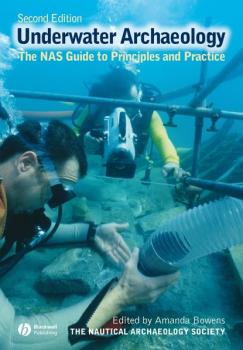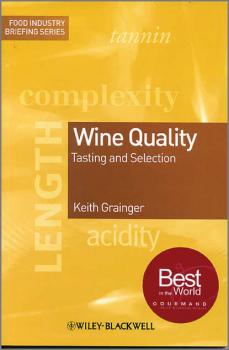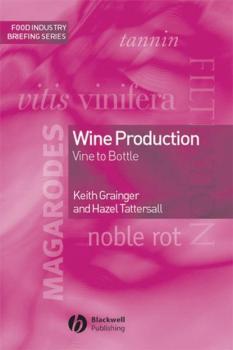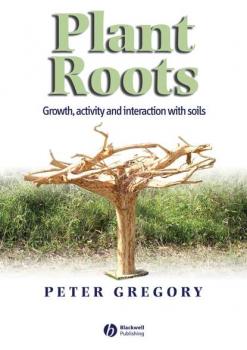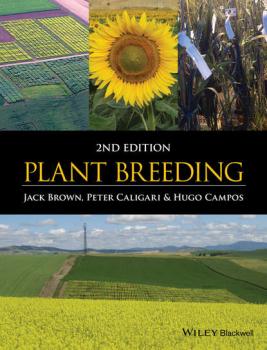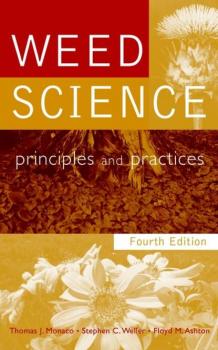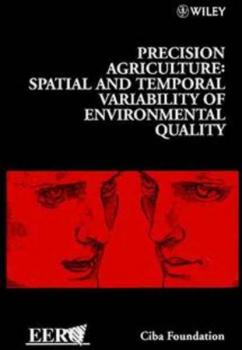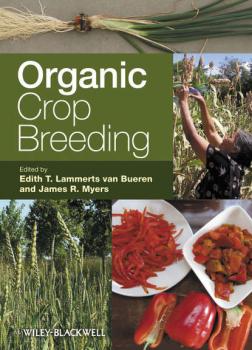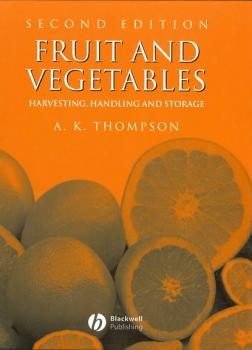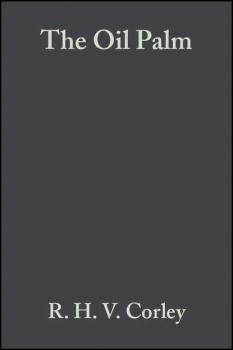Биология
Различные книги в жанре БиологияUnderwater Archaeology
Underwater Archaeology: The NAS Guide to Principles and Practice provides a comprehensive summary of the archaeological process as applied in an underwater context. Long awaited second edition of what is popularly referred to as the NAS Handbook Provides a practical guide to underwater archaeology: how to get involved, basic principles, essential techniques, project planning and execution, publishing and presenting Fully illustrated with over 100 drawings and new colour graphics New chapters on geophysics, historical research, photography and video, monitoring and maintenance and conservation
Wine Quality
WINNER OF A GOURMAND WORLD COOKBOOK AWARD 2009! BEST WINE EDUCATION BOOK (THE BEST IN THE WORLD) «I really enjoyed this book … A constant feature of this book is how well Keith balances his mastery of the technicalities with a certain 'common touch', the ability to explain sometimes complex issues in easy-to-understand terms.» –Association of Wine Educators «… an ideal book to accompany a WSET course.» –Harpers Wine and Spirit Throughout the eight thousand years of vinous history wines have been tasted and their qualities examined in at least a basic way. Today producers can control the growing and winemaking processes, and the consumer may choose from a vast array of wines, both fine and ordinary. Tasting and evaluating these requires knowledge, skill and diligence. Part of the Wiley-Blackwell Food Industry Briefing Series, this book provides a concise, easy to use and clearly presented understanding of the techniques of wine tasting, quality assessment and evaluation. The reader is taken through the various stages of a structured and professional approach to tasting and the book examines the questions as to what constitutes quality in wines, how quality can be recognised and how it is achieved. Also discussed are the faults that can destroy wines at any quality level, and misconceptions as to quality and guarantees. Clearly presented and easily readable the book includes: Diagrams Tables Tasting vocabularies Colour Plates Written by Keith Grainger, highly regarded international wine educator and wine consultant, this book provides a concise, quick reference for busy wine industry professionals, students or others who wish to gain a detailed knowledge of the concepts of wine tasting and quality assessment. The Wiley-Blackwell Food Industry Briefing Series Devised to increase the effectiveness and efficiency with which knowledge can be gained of the many subject areas that constitute the food industry, and on which the industry relies for its existence, this important series is intended expressly to benefit executives, managers and supervisors within the industry. Each book distils the subject matter of the topic, providing its essence for easy and speedy assimilation.
Wine Production
The standard of wines made today is arguably higher than any time in the six thousand years of vinous history. The level of knowledge of producers and the ability to control the processes in wine production is also greatly improved. Authors Keith Grainger and Hazel Tattersall detail these processes, from vine to bottle, looking at key factors such as geography, winemaking techniques, the impact of decisions made upon style and quality, and problems that may be encountered. The authors are not afraid to discuss practices that may be regarded as controversial. Highly regarded consultants to the wine industry, Grainger and Tattersall present a clear and accessible handbook: Bullet points Vineyard and winery photographs Diagrams Text boxes Wine Production: Vine to Bottle is a concise and easy-to-use reference guide for all busy food and beverage industry professionals, students and others needing a working knowledge of wine production.
Plant Roots
The root system is a vital part of the plant and therefore understanding roots and their functioning is key to agricultural, plant and soil scientists. In Plant Roots Professor Peter Gregory brings together recent developments in techniques and an improved understanding of plant and soil interactions to present a comprehensive look at this important relationship, covering: Root response to, and modification of, soils Genetic control of roots’ responses to the environment Use of modern techniques in imaging, molecular biology and analytical chemistry Practical exploitation of root characters This book will be a vital tool for plant, crop, soil and agricultural scientists, plant physiologists, environmental scientists, ecologists and hydrologists. It will be a valuable addition to libraries in universities, agricultural colleges and research establishments where these subjects are studied and taught.
Plant Breeding
This book, Plant Breeding, has it bases in an earlier text entitled An Introduction to Plant Breeding by Jack Brown and Peter Caligari, first published in 2008. The challenges facing today’s plant breeders have never been more overwhelming, yet the prospects to contribute significantly to global food security and farmers’ quality of life have never been more exciting and fulfilling. Despite this there has been a worrying decline in public funding for plant breeding-related research and support for international centers of germplasm development and crop improvement. In part, this has resulted in a serious reduction in the number of young people interested in devoting their professional careers to plant breeding as well as the number of universities offering plant breeding courses or conducting relevant research in plant breeding. The authors’ aim in writing this book is to provide an integrated and updated view of the current scientific progress related to diverse plant breeding disciplines, within the context of applied breeding programs. This excellent new book will encourage a new generation of students to pursue careers related to plant breeding and will assist a wider audience of agricultural students, agronomists, policy makers and those with an interest in agriculture in gaining insight about the issues affecting plant breeding and its key role in improving the quality of life of people and in securing sufficient food, at the quality required and at an affordable price. With comprehensive coverage including questions designed for students, and an accompanying website containing additional material to help in the study of the subject, Plant Breeding is an ideal text for all those studying plant and crop sciences, and a convenient reference source for professionals working in the area. All libraries within universities and research establishments where biological and agricultural sciences are studied and taught should have multiple copies of this book.
Weed Science
The updated edition of the classic, fundamental book on weed science Weed Science provides a detailed examination of the principles of integrated weed management with important details on how chemical herbicides work and should be used. This revised Fourth Edition addresses recent developments affecting weed science. These include the increased use of conservation-tillage systems, environmental concerns about the runoff of agrochemicals, soil conservation, crop biotechnology, resistance of weeds and crops to herbicides, weed control in nonagricultural settings and concerns regarding invasive plants, wetland restoration, and the need for a vastly improved understanding of weed ecology. Current management practices are covered along with guidance for selecting herbicides and using them effectively. To serve as a more efficient reference, herbicides are cross-listed by chemical and brand name and grouped by mechanism of action and physiological effect rather than chemical structure. In addition, an introduction to organic chemistry has been added to familiarize readers with organic herbicides. Also included are guidelines on weed-control practices for specific crops or situations, such as small grains, row crops, horticultural crops, lawns and turf, range land, brush, and aquatic plant life. Generously supplemented with 300 drawings, photographs, and tables, Weed Science is an essential book for students taking an introductory course in weed science, as well as a reference for agricultural advisors, county agents, extension specialists, and professionals throughout the agrochemical industry.
Precision Agriculture
This book investigates new agricultural systems such as organic and green manuring, as well as integrated pest management practices, and looks at how they can improve farm productivity against the enhancements for the environment. Much of the information presented focuses on microinvestigation of the soil, and on the effects of soil variability within fields on yields and nutrient flows.
Organic Crop Breeding
Organic Crop Breeding provides readers with a thorough review of the latest efforts by crop breeders and geneticists to develop improved varieties for organic production. The book opens with chapters looking at breeding efforts that focus on specific valuable traits such as quality, pest and disease resistance as well as the impacts improved breeding efforts can have on organic production. The second part of the book is a series of crop specific case studies that look at breeding efforts currently underway from around the world in crops ranging from carrots to corn. Organic Crop Breeding includes chapters from leading researchers in the field and is carefully edited by two pioneers in the field. Organic Crop Breeding provides valuable insight for crop breeders, geneticist, crop science professionals, researchers, and advanced students in this quickly emerging field.
Fruit and Vegetables
The second edition of this very well-received book, which in its first edition was entitled Postharvest Technology of Fruits and Vegetables, has been welcomed by the community of postharvest physiologists and technologists who found the first edition of such great use. The book covers, in comprehensive detail, postharvest physiology as it applies to postharvest quality, technology relating to maturity determination, harvesting, packaging, postharvest treatments, controlled atmosphere storage, ripening and transportation on a very wide international range of fruits and vegetables. The new edition of this definitive work, which contains many full colour photographs, provides key practical and commercially-oriented information of great use in helping to ensure that fruit and vegetables reach the retailer in optimum condition, with the minimum of loss and spoilage. Fruits and vegetables, 2nd edition is essential reading forfruit and vegetable technologists, food scientists and food technologists, agricultural scientists, commercial growers, shippers and warehousing operatives and personnel within packaging companies. Researchers and upper level students in food science, food technology, plant and agricultural sciences will find a great deal of use within this landmark book. All libraries in research establishments and universities where these subjects are studied and taught should have copies readily available for users. A. K. Thompson was formerly Professor and head of Postharvest Technology, Silsoe College, UK.
The Oil Palm
The oil palm is the world's most valuable oil crop. With palm oil production increasing by more than 50% in the last decade of the twentieth century and set to double in the next twenty years, it has never before been so important to understand the history, use and cultivation of this fascinating crop. There have been many new developments since the third edition of The Oil Palm in 1988, particularly in the fields of clonal propagation, agronomy, breeding and molecular genetics. This new edition has been completely rewritten, and is the first book to record and explore these and many other developments. The book traces the origins and progress of the industry, and describes the basic science underlying the physiology, breeding and nutrition of the oil palm. It covers both cutting-edge research, and wider issues such as genetic modification of the crop, the promise of clonal propagation, and the effects of palm oil on human health. The practical problems of maximising yield of oil and kernels are discussed in relation to the present 'yield gap' and oil extraction rate decline in Malaysia. The oil palm is also compared to the soya bean and other oil crops, and the recent history of the price of oil palm products is considered in the light of this. The Oil Palm makes an essential contribution to oil palm research and will be an indispensable reference and guide for agricultural students, researchers and all those working, worldwide, in the oil palm industry.
